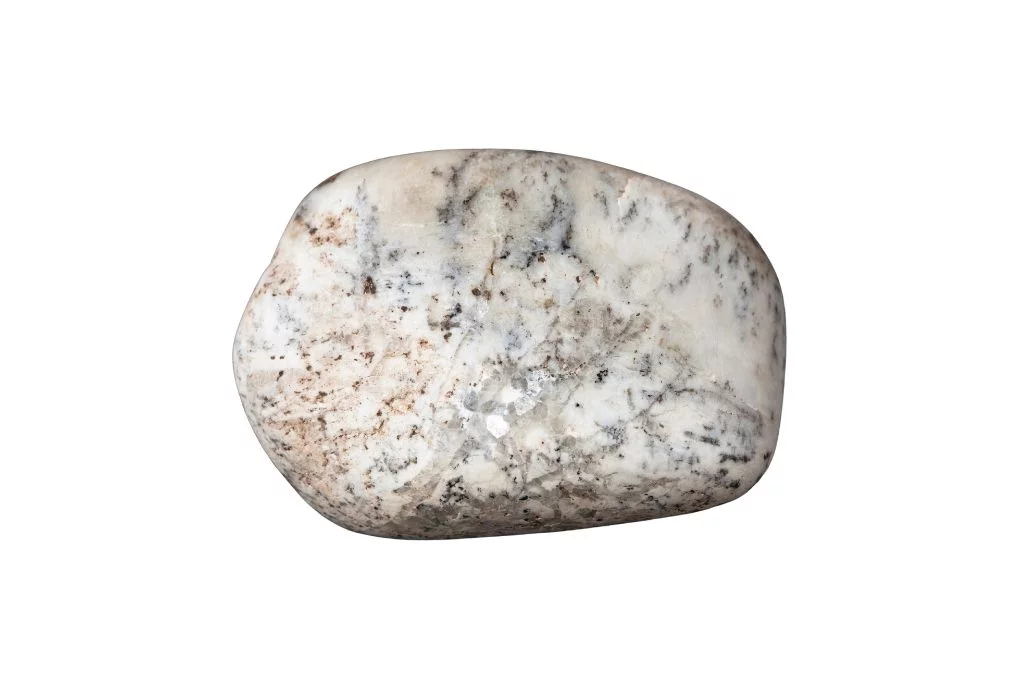Color and Transparency
Albite, a member of the plagioclase feldspar group, is typically characterized by its white to colorless appearance. However, it can also exhibit pale shades of gray, blue, green, or pink. The crystal is often translucent to transparent, allowing light to pass through its structure and creating a subtle luminosity.
Crystal Structure
Albite forms in the triclinic crystal system, resulting in its distinctive prismatic or tabular crystal habit. The crystals are often twinned, creating complex intergrowths that can be observed under close examination. This twinning is a key identifying feature of albite and contributes to its unique appearance.
Cleavage and Fracture
One of the most notable physical characteristics of albite is its perfect cleavage in two directions, which intersect at nearly right angles. This property gives albite its tendency to break along smooth, flat surfaces. When fractured, albite displays an uneven to conchoidal pattern, adding to its visual interest.
Luster and Surface Texture
Albite exhibits a vitreous to pearly luster on its surface, giving it a glossy, glass-like appearance. Fresh surfaces of the mineral can be quite reflective, while weathered specimens may display a more subdued, matte finish. The crystal’s surface may also show striations, which are fine, parallel lines resulting from its internal structure.
Unique Features
A distinguishing feature of albite is its occasional display of adularescence, a bluish-white light effect seen in some specimens. This optical phenomenon, also known as schiller, creates a subtle, moon-like glow that seems to float just beneath the surface of the crystal. Additionally, some albite crystals may contain inclusions of other minerals, creating interesting patterns or color variations within the stone.
Historical and Cultural Significance of Albite
Albite, a feldspar mineral, has been valued throughout history for its various properties and uses. Ancient civilizations, particularly in the Middle East and Mediterranean regions, utilized albite in jewelry and decorative objects. Its pearly luster and white to pale-colored appearance made it a popular choice for ornamental purposes. In some cultures, albite was associated with lunar energies due to its resemblance to moonlight.
Metaphysical Associations
In the realm of crystal healing and metaphysics, albite is believed to possess several beneficial properties. It is often associated with mental clarity, intuition, and spiritual growth. Practitioners claim that albite can help balance emotions, reduce stress, and promote a sense of inner peace. Some also believe it enhances psychic abilities and facilitates communication with higher realms.
Common Uses and Applications
Albite finds applications in both traditional and modern contexts. In the industrial sector, it is used in the production of ceramics, glass, and enamel due to its high sodium content. The mineral is also utilized in the manufacturing of certain types of porcelain. In jewelry making, albite continues to be popular for its aesthetic appeal and affordability. Some artisans incorporate it into handcrafted pieces, highlighting its natural beauty.
Believed Benefits
Those who work with crystals for healing purposes attribute various benefits to albite. It is thought to aid in the treatment of digestive issues, boost the immune system, and alleviate skin problems. Some practitioners use albite in meditation practices, believing it enhances focus and promotes a deeper state of relaxation. Additionally, it is said to assist in overcoming negative thought patterns and fostering a more positive outlook on life.

